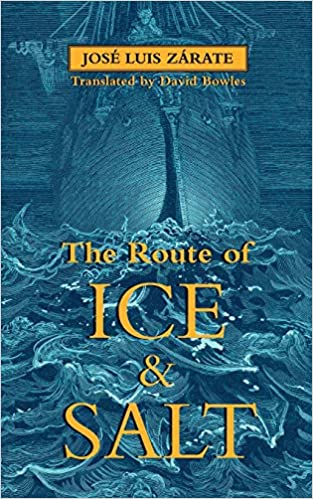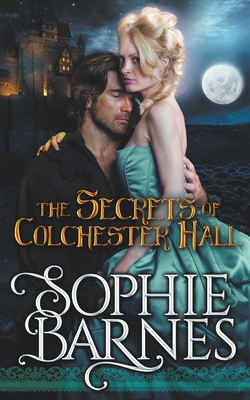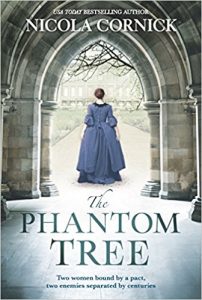 The Route of Ice and Salt by José Luis Zárate, David Bowles
The Route of Ice and Salt by José Luis Zárate, David Bowles Format: eARC
Source: supplied by publisher via NetGalley
Formats available: paperback, ebook
Genres: Gothic, horror, vampires
Pages: 196
Published by Innsmouth Free Press on January 19, 2021
Purchasing Info: Author's Website, Publisher's Website, Amazon, Barnes & Noble, Kobo, Bookshop.org
Goodreads
A reimagining of Dracula’s voyage to England, filled with Gothic imagery and queer desire.
It’s an ordinary assignment, nothing more. The cargo? Fifty boxes filled with Transylvanian soil. The route? From Varna to Whitby. The Demeter has made many trips like this. The captain has handled dozens of crews.
He dreams familiar dreams: to taste the salt on the skin of his men, to run his hands across their chests. He longs for the warmth of a lover he cannot have, fantasizes about flesh and frenzied embraces. All this he’s done before, it’s routine, a constant, like the tides.
Yet there’s something different, something wrong. There are odd nightmares, unsettling omens and fear. For there is something in the air, something in the night, someone stalking the ship.
The cult vampire novella by Mexican author José Luis Zárate is available for the first time in English. Translated by David Bowles and with an accompanying essay by noted horror author Poppy Z. Brite, it reveals an unknown corner of Latin American literature.
My Review:
Everyone thinks they know the story of Dracula – and we all do. Sorta/kinda. Not necessarily because we’ve read the original but because we’ve seen one or more variations of it. The Count’s story is part of the cultural zeitgeist. We ALL know who he is.
 (If you haven’t read the original, it’s available in ebook free from your local public library AND from a host of online retailers including Amazon. If you want to get the flavor of the story there’s also an excellent full-cast recording by L.A. Theatreworks that I highly recommend – especially for Halloween.)
(If you haven’t read the original, it’s available in ebook free from your local public library AND from a host of online retailers including Amazon. If you want to get the flavor of the story there’s also an excellent full-cast recording by L.A. Theatreworks that I highly recommend – especially for Halloween.)
But one of the things that gets lost in adaptations of the original work is that Dracula is an epistolary novel. It’s a story told in documents – not just letters but also newspaper accounts, diary entries and, as expanded upon in The Route of Ice and Salt, the terse entries in the captain’s log of the ship that brought Dracula’s crates of Transylvanian soil to Britain. And, unbeknownst to the captain and crew of the Demeter, Count Dracula himself.
Not that the captain doesn’t eventually find out about the vampire – just before he dies.
However, The Route of Ice and Salt is not a retelling of the original Dracula story. Rather, it’s an illumination and expansion of a dark and hidden place in that more famous tale. In the original, we read the terse prose of the captain’s official log. We learn that when the ship reached its destination, the crew was missing, presumed dead. And the unnamed captain was discovered lashed to the wheel of his doomed ship with a rosary clutched in his cold, dead hands.
This is his story.
 Escape Rating A-: Dracula may be the entry point for this story for many readers, but the Count isn’t exactly THE point of the story. The Route of Ice and Salt is cult classic of Mexican fantasy, first published in 1998 by a small comic book publisher that didn’t survive its attempt to jump from comic books to prose. This is the first translation of the work into English, and it’s a creeping fever dream of a story that picks up on themes that were subtext in Dracula – and other early vampire stories – and moves them from subtext to explicit text.
Escape Rating A-: Dracula may be the entry point for this story for many readers, but the Count isn’t exactly THE point of the story. The Route of Ice and Salt is cult classic of Mexican fantasy, first published in 1998 by a small comic book publisher that didn’t survive its attempt to jump from comic books to prose. This is the first translation of the work into English, and it’s a creeping fever dream of a story that picks up on themes that were subtext in Dracula – and other early vampire stories – and moves them from subtext to explicit text.
The still-unnamed captain of the Demeter is gay, horny and has very explicit thoughts and feelings about his crew that he keeps to himself in the dark of the night but never indulges. For reasons that have explicitly to do with keeping discipline aboard the ship, maintaining the chain of command and the acknowledgement that his crew can’t really give consent because he’s their master while they’re aboard.
And that, if they report him to the ship’s owners when the Demeter is back home, he’ll not just be fired – he’ll be prosecuted, imprisoned and quite possibly killed. Just as his first lover was – something that he is still blaming himself for years if not decades later.
That blame brings up a second theme, the question of what, and who is truly the monster in this or any other monster tale. The captain sees himself as a monster, both for his own part in his lover’s death and for the desires that his society and his church consider monstrous.
It’s only at the end that he comes to the liberating realization, in the face of a literal bloodsucking fiend who has murdered his crew, that he is not a monster at all – no matter what anyone else might say.
But those aren’t reasons to read The Route of Ice and Salt. As much as it has to say in its own subtext, it’s the way that it says it that are the reasons to read the story.
This thing is creepy as hell. If you like horror of the creeping, crawling, looming variety, if you enjoy that sensation of drowning horror as you read deeper into something that you know is going to keep you up half the night, this is an excellent story of that type. I finished at 2 am and I honestly should have waited until morning because it left me seriously creeped out.
The language of the story is beautiful. At times it’s lush and poetic, and then it turns sharp as a knife – or a tooth. I suspect it’s even more lyrical in the original Spanish but the translation is quite lovely. In that aspect it reminds me of Nothing but Blackened Teeth although their language and vernaculars are literally at least a century apart. But still, that same sense of sinking into a pool of beautiful words – only to have the story almost literally jerk you down into its depths of nightmarish horror.
If you’re looking for a truly creepy Halloween read, take The Route of Ice and Salt.

 The Secrets Of Colchester Hall by
The Secrets Of Colchester Hall by 
 The Woman in the Lake by
The Woman in the Lake by  After reading
After reading 